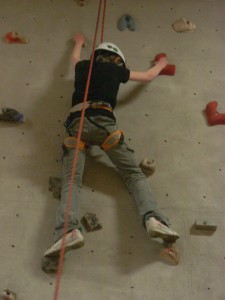Are kids these days as active and healthy as they were 20 years ago? With public schools all across the country facing budget cuts and reduced recess time and reduced physical education programs, it is easy to link the idea that the children of America are slowly becoming less active and even participating in physical activity less than their parents or grandparents did.
With a reduction in physical education programs in public schools and childhood obesity on the rise, it is no wonder we see reports on the news or internet that America is on the fast track to becoming a fatter and unhealthier country.
When kids grow, they do not automatically develop the skills, knowledge and attitudes that lead to an enjoyable and healthy lifestyle beyond high school. These are important lessons to be learned at a young age. If physical education programs continue to be cut or reduced while public schools continue to push the math, reading, and science requirements to higher levels, then the students never get a chance to experience quality physical education programming and never develop a complete understanding of movement concepts such as body awareness, spacial awareness, and effort.
So what’s the solution? Participating in after school sports such as track and field is a great way to be physically active and overcome the effects of budget cuts, which are reducing PE programs all around the country.
Not so fun fact: The average American child spends 4.5 hours a day watching T.V.
SOURCE: The Biggest Loser (2013).
Kids with reduced PE programs can benefit from track and field through…
Health promotion
Children who join track and participate in physical activity can postpone the effects of old age and more importantly, reduce the major risk factors of coronary heart disease: obesity, inactivity, and high blood pressure.
Improved physical fitness
Children who join track and participate in physical activity improve their muscular strength, flexibility, endurance, and body composition (fat to muscle ratio) as well as increase bone density for a stronger and healthier skeleton.
Skill development
Children who join track can participate in physical activity and develop physical skills such as balance, coordination, agility, strength, speed, and reaction time. These learned skills are being reduced in most physical education programs and are being replaced with fat burning circuit routines that are specifically designed to target weight loss. Why? Because physical education credit requirements for graduation are reduced (budget cuts); meaning the students participate in physical activity less often in their four years of high school. The end result ends up being that physical educators put a lot of stress on themselves to help their students maintain a healthy weight and they sacrifice important skill development and add more fat burning activities. Now this is not true for all physical education programs, but there are quite a few physical educators throughout the country who are burdened with 50-70+ students in one gym class. Let’s not forget that some of these classes are coed and with mixed grades with a 2-3 year age difference.
Self-confidence, leadership, social skills, and responsibility
Children who join track are exposed to a team atmosphere full of team building experiences, which can improve their moral development and create positive feelings of self-worth. Being part of a track team also provides opportunities to develop leadership, social skills, and accept responsibility for their behavior. Participating in track is also a great platform for developing strong relationships with teammates because they might share the same interests, be similar in age, or have similar goals. As a team, the student athletes benefit from learning from their own personal experiences as well as team related experiences…good or bad.
Physical activity recommendations from leading health organizations
American Heart Association
At least 30 minutes (or 150 calories) of moderate exercise per day.
International Association for the Study of Obesity
45-60 minutes per day of moderate physical activity to prevent weight gain; 60-90 minutes per day of moderate physical activity to prevent weight regain in formerly obese people.
Centers for Disease Control (CDC)
A minimum of 30minutes per day of moderate physical activity on most days of the week.
U.S. Surgeon General
A minimum of 150 calories per day expanded in moderate physical activity; resistance training
Institute of Medicine
At least 60 minutes of moderate physical activity per day.
World Health Organization (WHO)
At least 60 minutes of moderate physical activity per day.
American Academy of Orthopaedic Surgeons
30 minutes of moderate physical activity per day, appropriate for specific condition and designed by physician; seek advice if pain is severe.
American College of Obstetrics and Gynecology
30 minutes or more of moderate exercise on most, if not all days of the week; previous inactive women or those with complication should consult with a physician before beginning activity.
American Diabetes Association
All levels of physical activity are possible if blood sugar is well-controlled; avoid exercise when blood sugar is above 250 mg/dl and ingest carbohydrates prior to exercise when blood sugar is below 100 mg/dl.
As you can see most of the leading health organizations recommend anywhere between 30-60 minutes of physical activity a day to combat the dreaded path to obesity. If a young boy or girl were to join track in the spring, they would easily meet the recommended 30-60 minutes of physical activity while building important relationships, developing skills, improving fitness, and developing a positive sense of self-confidence and well-being.

